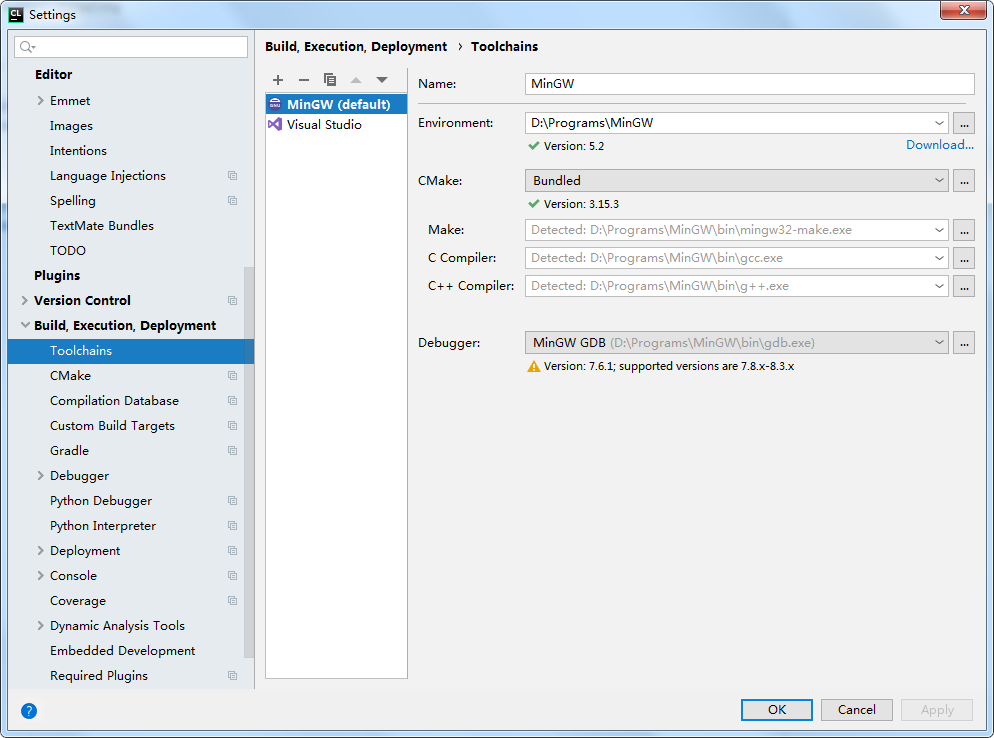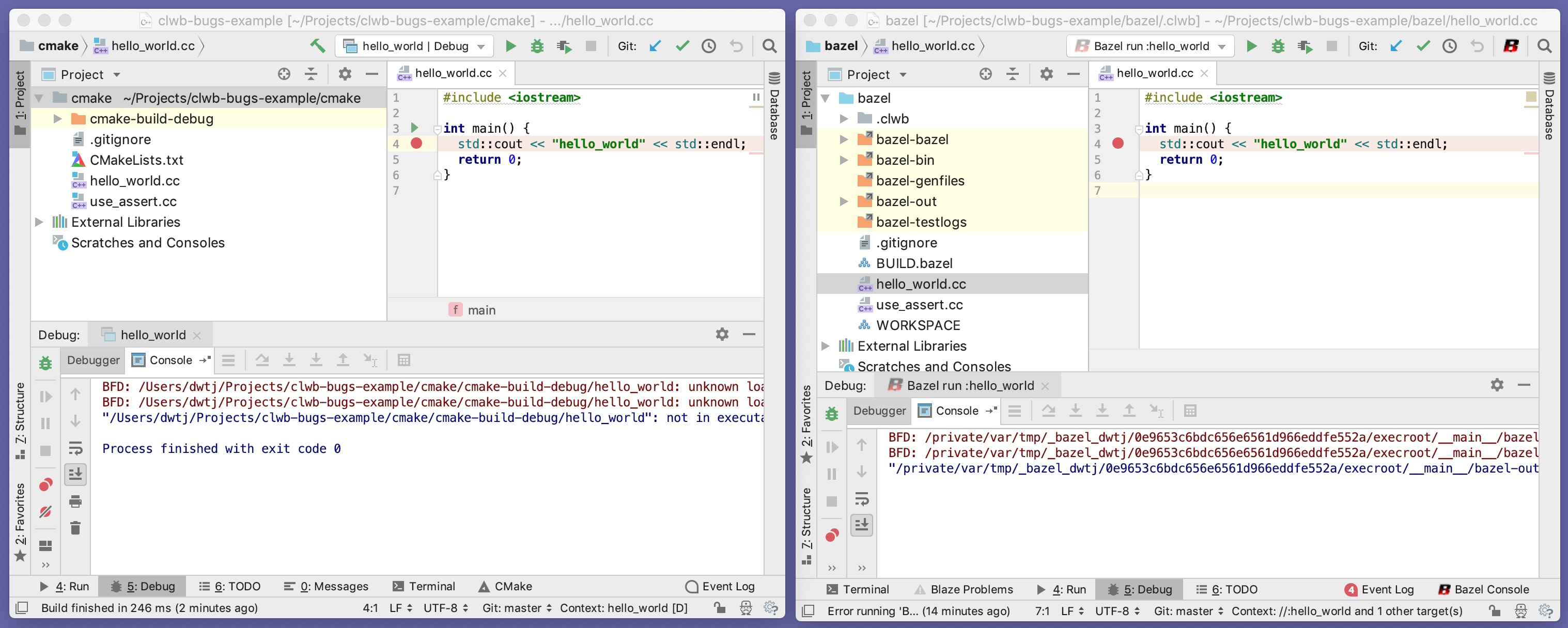
To discard a variable definition, select it in the list and click. To define a new variable, click and specify the variable name and value.

Click Browse to the right of the field and configure a list of variables in the Environment Variables dialog, that opens: In this field, specify the environment variables for the Node.js executable file, if applicable. For more details, see Debugging CoffeeScript. The file can be generated externally or through compilation using File Watchers. If you are going to debug CoffeeScript, specify the path to the generated JavaScript file with source maps. In this field, specify the path to the main file of the application that starts it (for example, bin/www for Express applications). By default, the field shows the project root folder. In this field, specify the working directory of the application.
#CLION RUN CONFIGURATION FULL#
Otherwise, by default the debug process will use V8 Debugging Protocol.įor a full list, see Node.js command-line options. Use -inspect or -inspect-brk parameter when you are using Node.js v7 for Chrome Debugging Protocol support.
#CLION RUN CONFIGURATION INSTALL#
Therefore make sure you have the coffeescript package installed locally as described in Install the CoffeeScript compiler. This mode requires that the register.js file, which is a part of the coffeescript package, is located inside your project. Use -require coffeescript/register to have CoffeeScript files compiled into JavaScript on the fly during run. In this field, type the Node.js-specific command-line options to be passed to the Node.js executable file. Select an interpreter from the list or click and configure a new one in the dialog that opens.
#CLION RUN CONFIGURATION WINDOWS#
This can be a local or remote Node.js interpreter or a Node.js on Windows Subsystem for Linux. In this field, specify the Node.js interpreter to use. Consequently, changing package.json in the project results in re-building the image. The Node.js Remote Interpreter plugin is not bundled with CLion, but it can be installed on the Settings/Preferences | Plugins page, tab Marketplace, as described in Installing plugins from JetBrains repository.ĬLion copies package.json to the /tmp/project_modules folder in the image, runs npm install, and then copies the modules to the project folder in the container. To use a Node.js on WSL by default in all run/debug configurations in this project, choose it as the default project node interpreter.Ĭonfiguring remote Node.js interpreters is available only when the Node.js Remote Interpreter plugin is installed and enabled. Install the Node.js plugin in Settings/Preferences | Plugins as described in Installing plugins from JetBrains repository. In this dialog, create configurations for starting the debugger together with your Node.js applications on your computer. Learn more from Supported Node.js versions. The following Node.js versions are supported in CLion 2020.3 and later: You can set CMake install or other CMake targets as before launch steps.The dialog is available only when the Node.js plugin is installed and enabled on the Settings/Preferences | Plugins page as described in Managing plugins. If you add other tasks, they will performed in the order they appear in the list. In this area, you can specify the tasks to be performed before launching the configuration.īuild is the default pre-launch step for CMake applications. Note that on Cygwin with GDB, executables always run in external console regardless of this checkbox's status. This option affects only the cases of MSVC with LLDB and MinGW with GDB. Set this checkbox to launch the process in the external cmd.exe console. Set this checkbox to launch the configuration with root privileges. Run with Administrator privileges / Run with root privileges If you want CLion to ask you to choose a file input every time you run the application, use the $FilePrompt$ macro, which invokes the file selection dialog on every launch. Macros ( ) and path variables are also available in this field. Relative paths are prepended with the Working directory path. Refer to Adding environment variables for details. To specify another directory, click and select the directory.Ĭreate environment variables and specify their values. By default, the field contains the directory where the project file resides. This directory is the starting point for all relative input and output paths. Specify the working directory to be used for running the application. You can also use path variables in this field. If necessary, click the button and type the desired arguments.Ĭlick to open the Macros dialog.

In this field, type a list of arguments to be passed to the program in the format you would use in the command line. Target types are marked with the following icons:

You can specify a remote executable here. Specify the executable for your configuration.


 0 kommentar(er)
0 kommentar(er)
